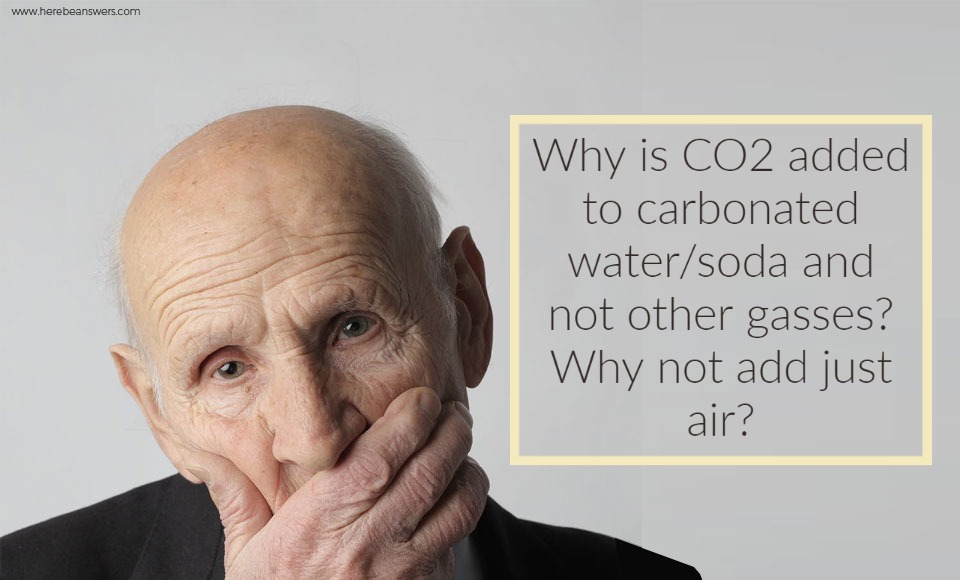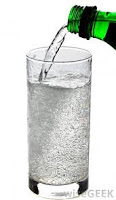Whether it’s a can of Pepsi or Coke, there’s a familiar “fssst” sound as you open it. What you hear is the millions of carbon dioxide molecules escaping from the tin walls where they are kept against their will.
As its name suggests, carbonated drinks are added with one active ingredient that makes all the fizz: carbon dioxide. We’ve learned from grade school that carbon dioxide (CO2) is naturally present in our planet. It is a tasteless and odorless gas present in the atmosphere in small amounts. Carbon dioxide plays a crucial role in regulating the Earth’s temperature by absorbing the sun’s infrared radiation. The carbon dioxide exhaled by humans, animals, and most bacteria is taken in by plants and use it to build sugars in photosynthesis. (click here for more details)
As there are different grades of carbon dioxide available in the market, we have to note that the one added to fizzy drinks is food-grade. The Food and Drug Administration (FDA) requires a grading of 99.90% CO2 purity for all beverage industries. The FDA allows the remaining 0.09% of the gas to be made of other hydrocarbons. (click here for more details)
Other than food/beverage applications, carbon dioxide is also used in research (99.999% purity), medical use (99.5%), and industrial applications (99.5%). The most significant difference between the grades is the impurities present like oxygen, ammonia, benzene, carbon monoxide.
We pop our soda can without minding what’s going on inside. But now we will take a closer look at our carbonated drinks. We are already aware that it’s the carbon dioxide that causes our soda bottles to fizz as we shake them and why wine bottles open with a popping sound. Soft drinks and other carbonated beverages have a certain amount of carbon dioxide dissolved in them. So how does carbonation work?
Carbonation is more than just bubbles. There’s more science it this process than you think. As soon as gaseous carbon dioxide is mixed with water, it undergoes a chemical reaction to produces aqueous carbonic acid. Carbonic acid gives the typical acidic flavor and a sweet sensation in our mouth. Without it, almost every soft drink would taste too bland. Aside from the flavor, it imparts that it’s so special about carbon dioxide that, among other gasses, it’s the top choice in carbonated drinks. (click here for more details)
Solubility matters when it comes to mixing any gas with a liquid. Carbon dioxide is highly soluble in water, that is, 1.5 liters of CO2 at normal atmospheric pressure can be dissolved in 1 liter of water. Other common gases like helium and hydrogen don’t mix well with water, while others that blend well with water like hydrogen sulfide and ammonia are toxic.
Soft drink manufacturers add the tingling froth by forcing carbon dioxide into the soda at high pressures. An unopened soda can be seen bubble-free because the pressure inside the bottle keeps the carbon dioxide dissolved in the liquid. (click here for more details)
CO2 is impressively stable when mixed with water, unlike many other gases. Its stability leads to the formation of carbonic acid, which gives a desirable taste. Other gases would result in nasty byproducts when mixed with cold beverages.
Certain beverages use gases other than CO2, but they are usually too expensive for a casual drinker. CO2 is readily available and is cheaper, so it makes an excellent choice for our soda drink.
Have you wondered why we don’t use oxygen instead of CO2 since it is more abundant in the atmosphere? It’s because oxygen causes beverages to spoil, while carbon dioxide does a great job as a preservative because it prevents bacteria and fungi’ growth. Another thing that happens during carbonation is the release of oxygen, depriving the microbes that need oxygen to survive. So, carbonated beverages are safe from bacterial contamination and can last for a long time as long as it’s sealed. (click here for more details)
To sum it up, there are some other gases than can be used as an alternative to CO2, but none of them are as safe for consumption, flavorful, stable, and widely available and cheap. Meanwhile, CO2 is sitting back, relaxed as it remains in the throne – creating all the fizz!

